


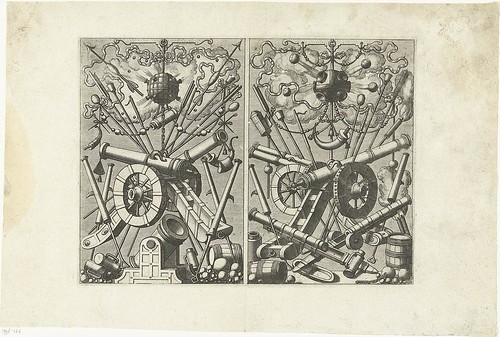
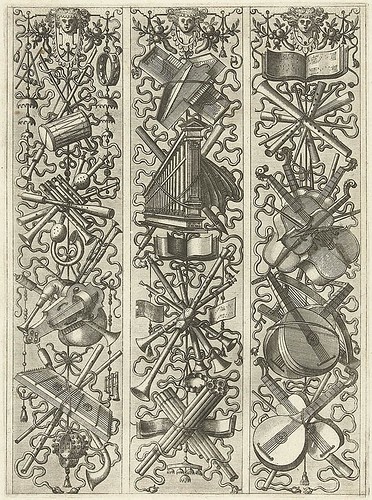


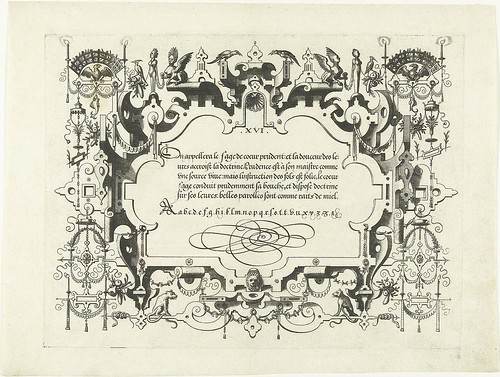



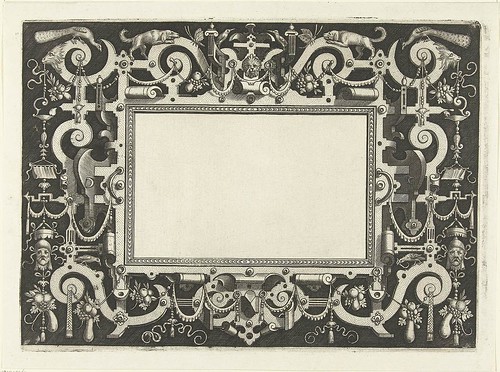
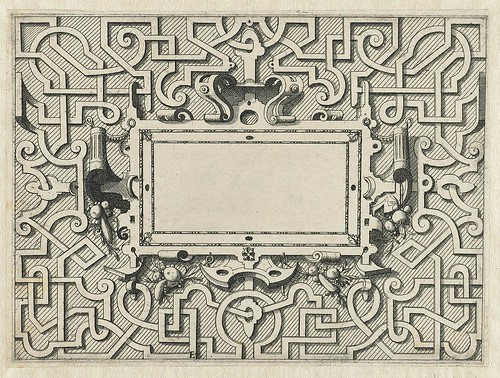


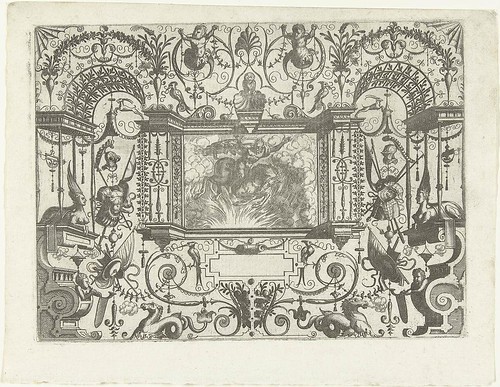
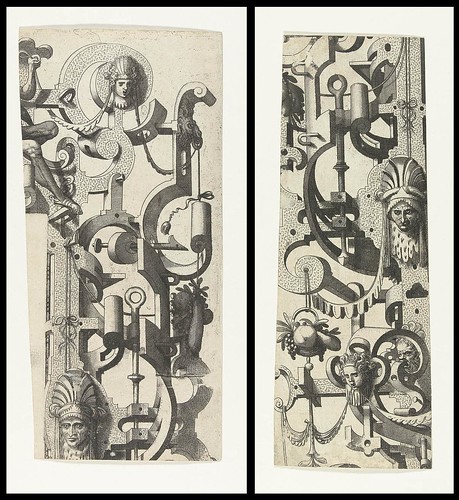
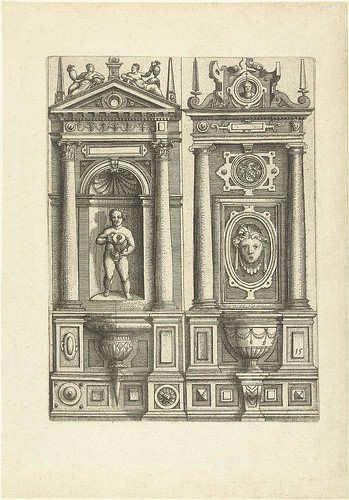
Known in the lowland countries as the 'King of Architects', Hans Vredeman de Vries [aka Johan Frisio] (~1527-~1606) apprenticed in his native Friesland as a painter before travelling widely in the Holy Roman Empire, partly as a result of religious persecution. He was most active in Antwerp, Liège, Wolfenbüttel, Hamburg, Danzig, Prague and The Hague.
De Vries' interest in architecture developed from studying and copying the works of Serlio and Vitruvius, augmented by a commission he received to complete another artist's unfinished painting on perspective. These themes of classical architecture and perspective dominated De Vries' design work, which belongs more in the realm of theoretical rather than practical architecture. He was responsible for the construction of a few modest buildings, a number of triumphal arches for ceremonial entries of royal dignitaries and he worked as a fortification surveyor-architect at one stage; but it was his innovative design sketches that proved to be most influential.
Although de Vries is thought not to have visited Italy, his purely ornamental designs - borrowed from classical antiquity - for vases, furniture, scrolls, grotesques and trophies, constituted an inventory of Renaissance decoration and served as an important conduit for the Italian styles to be disseminated throughout northern Europe. The motifs were cast in the fantasy Mannerist style, as was the custom of the day, and, combined with de Vrie's rich inventiveness - anticipating themes of Baroque decoration - the ornamental designs are particularly notable for straddling, or at least linking, all three major artistic traditions: Renaissance, Mannerist and Baroque styles.
The majority of de Vries' sketches were engraved by other people - Gerard de Jode, Hieronymus Cock, Phillip Galle, Hendrik Hondius - in a variety of cities and printshops, thereby laying the foundation for their widespread copying and circulation. Collections of these prints were intended as instructional models for artists and architects but the motifs could be adapted by goldsmiths, tapestry makers or sculptors. The assembly of images in this post and the previous entry are intentionally skewed towards the decorative studies; but in truth, de Vries' two volume treatise on perspective and his more formal works on orders and details of architecture had the more lasting influence in northern and central European (and even British) architectural circles.
- Rijksmuseum has the largest and best collection of prints after the designs of Hans Vredeman de Vries [if that link doesn't work, try the search page with 'vredeman de vries, hans']
- Frisian Historical and Literary Centre have a couple of collections: 'Perspective' and 'Operum Antiquorum Romanorum'.
- Heidelberg University have three Hans Vredeman de Vries printbook sets (including a different edition of 'Perspective') : click 'tafel' or 'tafeln' and, depending on the site format, either click the '-' at the top of the page or 'vorschau', to obtain the thumbnail pages)
- Biographical material: one, two, three, four, (w) et en Français.
- Additional image source: Ornamental Prints Online.
- Note: see Part One - The Architecture of Fantasy I. [via and thanks Karla!]
- There are a few books on Hans Vredeman de Vries at Amazon
- All the images above were background/spot cleaned to one extent or another.




No comments:
Post a Comment